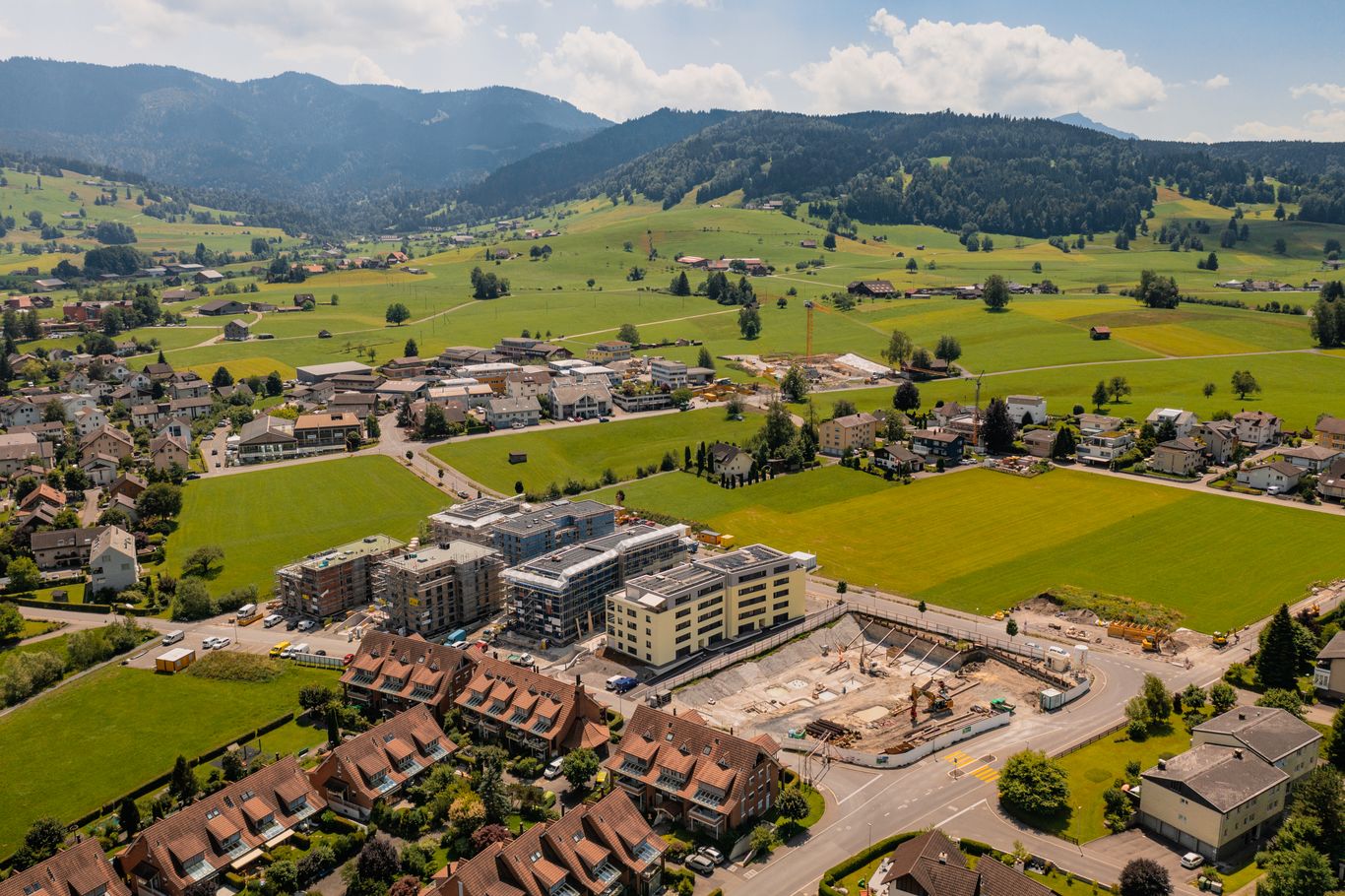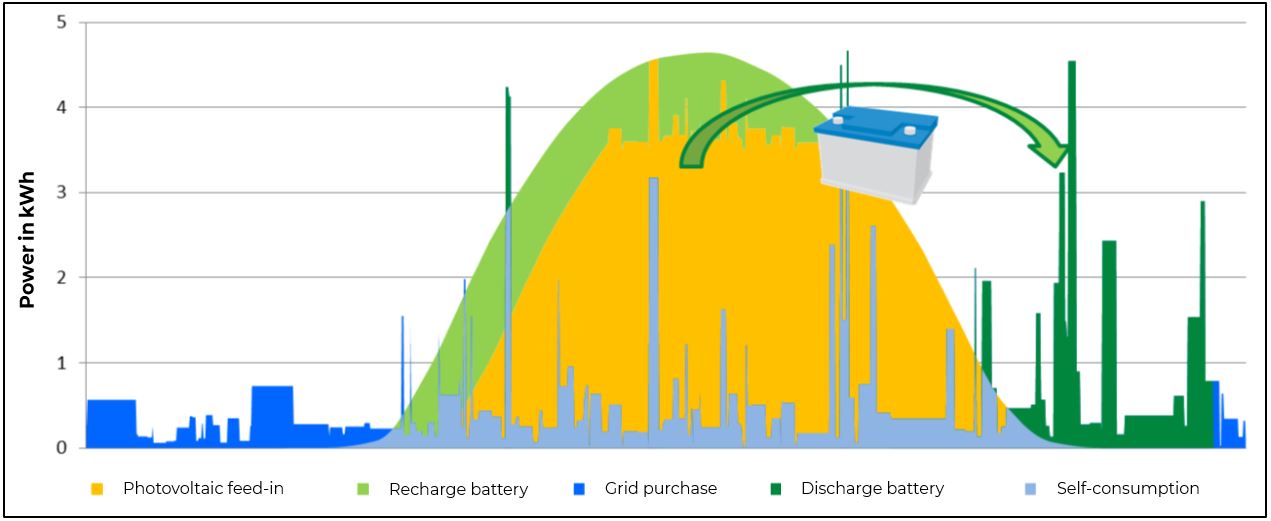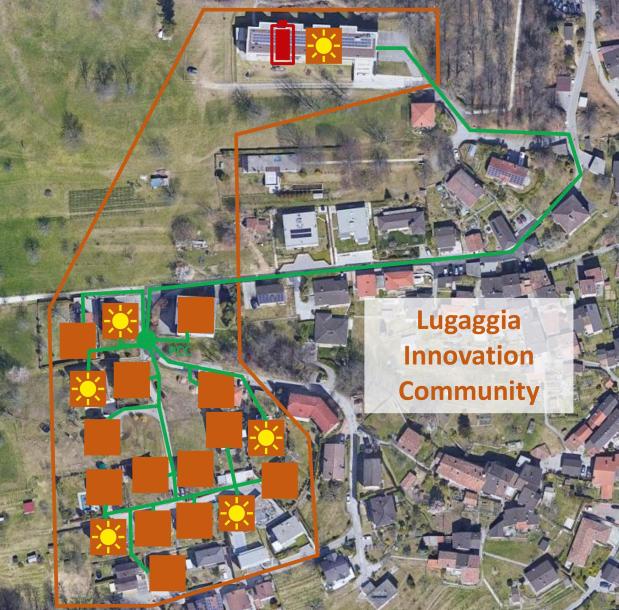April 22nd, 2024

The Zimel self-consumption association (ZEV Zimel) has been under construction on the Unterägeri corporation‘s building land since spring 2020. The site currently comprises 12 buildings with 101 flats. Five further apartment blocks with a total of 48 flats are currently under construction. Source: © smart-me.
Implementing a photovoltaic installation is a first step towards shifting away from fossil fuels. To fully utilise the benefits of photovoltaic energy it becomes essential to maximise the efficiency of the system through rational consumption and a strategy of grouping consumers for the purpose of self-consumption.
Definition:
“Self-consumption” refers to the immediate consumption of electricity at the production site, at the same time as its production, or the simultaneous storage and subsequent consumption at the production site.
The aim of a ZEV (association for self-consumption) is to reduce the amount of electricity purchased from the grid and to optimise/maximise the on-site utilisation of photovoltaic energy (self-consumption).
The mismatch between photovoltaic energy production and consumption needs results in relatively low rates of self-consumption unless expensive storage solutions are available locally. An alternative to batteries is the aggregation of the demand of several prosumers (consumers), as the collective load diagram can better adapt to the availability of photovoltaic energy.

Schematic daily pattern for production and consumption with a photovoltaic system. © Basler & Hofmann AG.
Generally, to each user is assigned its own energy meter and subscription for the supply of electricity. Following the establishment of a ZEV, a central electricity meter is instead installed for the entire energy community. The electricity company will only manage this meter, while the installation owner will take care of reading and billing the individual private meters of the users.
The costs for users are usually lower than the average tariff of the electricity company because the administrative costs are lower. A single subscription is made with the electricity company concerning the general meter assigned to the ZEV. Besides, the cost of the provided electricity cannot under any circumstances exceed that of the equivalent product supplied by the local electricity company.
Considering that local electricity companies are indeed required to purchase and remunerate surplus electricity, but that the remuneration rates are generally much lower than the cost of the electricity the company itself supplies, the higher the share of self-generated energy that a ZEV manages to consume on site, the less electricity it needs to purchase from the grid.
Basically, grouping for own consumption purposes is profitable both for the customer, who pays less for electricity, and for the owner of the installation, who sells the energy produced by his installation at a higher price than if it was purchased from the electricity company. Bear in mind that the remuneration of energy and certificates is defined annually by the cantonal electricity companies in consideration of the evolution of the Swiss electricity exchange index Swissix and the prices of the Guarantees of Origin (GO).
Taking the example of Ticino, except for the record of 22 cts/kWh seen in 2022 due to the strong instability of the energy market caused by the war in the Ukraine and the related gas supply disruptions, these rates are more realistically below 10 cts/kWh (8.5 cts/kWh in 2023).
Ergo: this is a operation that is financially attractive for both condominium owners as well as profit-making buildings.
For further information, please refer to the document “Practical Guide for Self-Consumption” (available in DE, FR and IT) elaborated on behalf of SwissEnergy by Swissolar, the Swiss Property Owners Association, the Swiss Tenants’ Association (Schweizerischer Mieterinnen- und Mieterverband SMV) and with the involvement of the Association of Swiss Electricity Companies (Verband Schweizerischer Elektrizitätsunternehmen VSE).

As from 2018, the Federal Energy Act permits the establishment of ZEVs, effectively allowing multiple users to share the energy produced by one or more PV systems. Source: Solar Spar.
An example: Lugaggia Innovation Community (LIC)
In Ticino, the ‘Lugaggia Innovation Community’ project has been highly promoted and is generating further similar initiatives.
The pilot project grouped 18 owners of single-family houses, six of them equipped with photovoltaic installations (totalling 72 kWp), resulting in an ASC that also included the photovoltaic electricity generated by the installation at the nearby kindergarten (30 kWp). A district battery (60 kWh) and a blockchain-based control mechanism were also integrated.
Thanks to the battery and load management, self-consumption has increased significantly to 94%. This relieves the local distribution grid and makes the use of self-generated solar energy more profitable for ZEV users. ZEV households receive energy at an average cost of less than 16 cents per kWh compared to non-ZEV households. The owners of PV installations within the ZEV can also sell their energy at better prices than the remuneration rates generally charged by the local electricity company.
This project was supported by the Federal Office of Energy from 2019 to 2021 and won the Watt d’Or in 2023.


